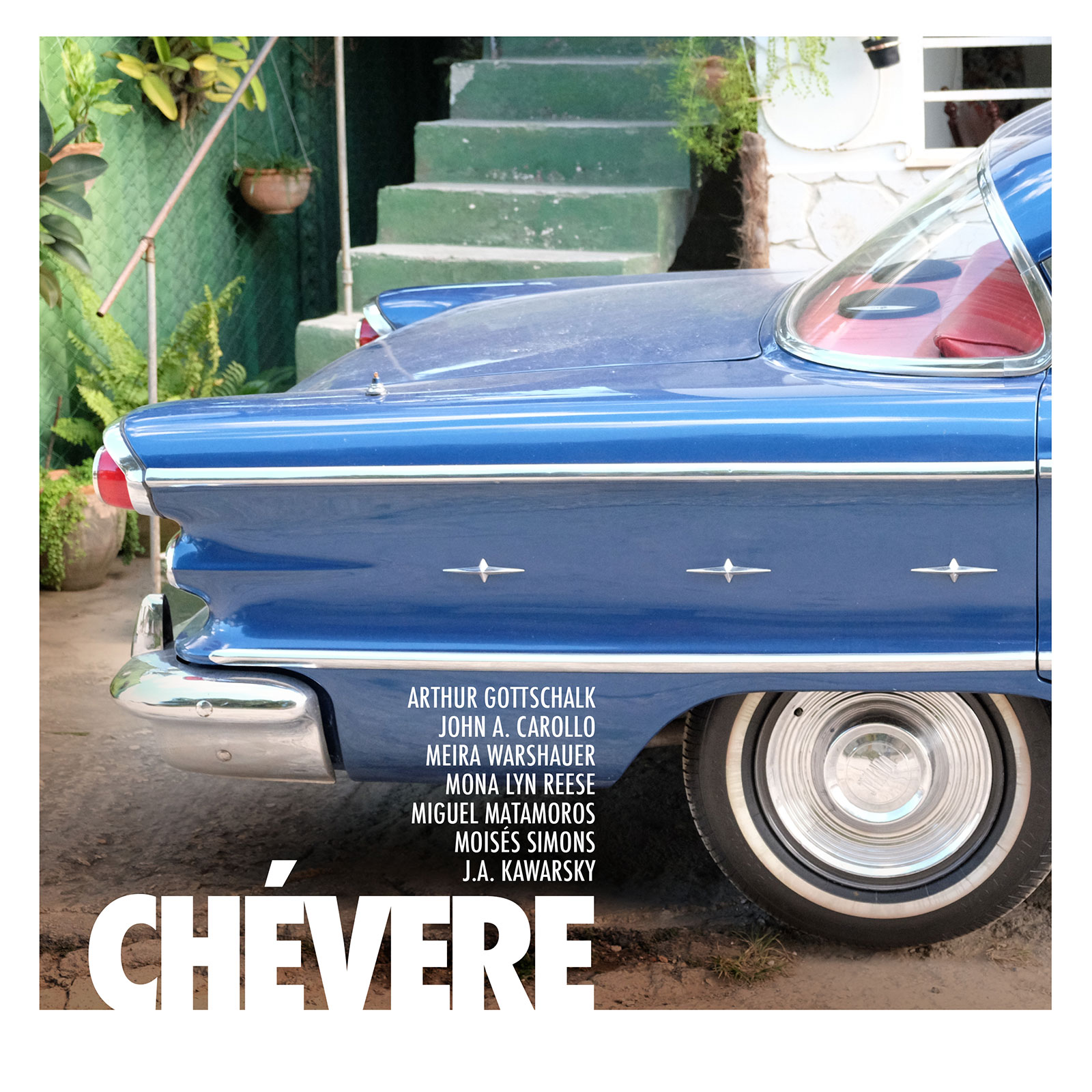
Share Album:
Chévere
Arthur Gottschalk composer
John A. Carollo composer
Meira Warshauer composer
Mona Lyn Reese composer
Miguel Matamoros composer
Moisés Simons composer
J.A. Kawarsky composer
Ansonica Records’ new release CHÉVERE richly explores and demonstrates the myriad cultural intersections that have recently become available to American and Cuban musicians. The album came together at a recording session that took place in Havana, Cuba in the month of January in 2017. The release presents a variety of collaborations between American, or American-based, composers and Cuban instrumentalists, arrangers, singers, and composers. Some of these connections are relatively straightforward, while others are more nuanced and personal; yet, they all enrich the compositions on CHÉVERE with the energy unique to the interaction of two powerful musical traditions.
Arthur Gottschalk’s Imagenes de Cuba and John A. Carollo’s In Your Hour of Need represent the album’s most nuanced and personal connections to Cuba. Gottschalk’s work draws on his many trips to Cuba, referencing various elements of modern Cuban culture as observed in his travels. Carollo’s piece, on the other hand, gains its Cuban character directly from the input of CHÉVERE’s producer in Havana, Dayron Ortega, who arranged this work for instrumental ensemble. Originally a piano étude, Carollo and Ortega collaboratively transform In Your Hour of Need into a brilliant and truly fascinating amalgam of Euro-American musical ideas and Cuban instrumentation and orchestration.
Meira Warshauer’s plaintive choral works Oseh Shalom and Akhat Sha’alti represent the classic form of cultural exchange wherein Warshauer’s voice as a Jewish-American composer is brought to life by the renowned Cuban vocal ensemble Schola Coralina. The lyrical, mostly meditative choral works, drawn from Jewish liturgy and set in Hebrew, are rendered in a stunning performance, which is made more meaningful by the blend of cultures it represents.
¡La Habana, Mi Amor! is a three movement piece which originated as three short works by composer Mona Lyn Reese. In collaboration with the musicians of Havana, her piece was arranged for Cuban jazz band and voice and serves as an excellent example of the artistic collaboration between America and Cuba amidst the lifting of various regulations in the American Cuban embargo.
Jay Kawarsky’s Grace Dances, which is loosely inspired by an early Christian text, resembles Warshauer’s works in that its performance marks the cultural exchange between an American composer and Cuban instrumentalists. Grace Dances is scored for oboe and string quartet, and unfolds like a chamber concerto for the oboe. The work opens with a slow, expansive oboe melody, but is most notably characterized by playful, rhythmically active counterpoint. Kawarsky often manipulates the string quartet’s texture and sonic perspective, drawing solo instruments out of the group for brief duos, trios, and quartets with the oboe. Overall, Grace Dances is charming, lovely, and energetic, and even reminds one of Igor Stravinsky’s Jeu des cartes, as both works briefly quote Rossini’s overture to The Barber of Seville.
Listen
Stream/Buy
Choose your platform
Track Listing & Credits
| # | Title | Composer | Performer | |
|---|---|---|---|---|
| 01 | Imágenes de Cuba: I. Manisero | Arthur Gottschalk | Apollo Chamber Players | Anabel Ramirez, violin I; Matthew J. Detrick, violin II; Whitney Bullock, viola; Matthew Dudzik, cello | 6:46 |
| 02 | In Your Hour of Need | John A. Carollo, arr. D.O. Guzmán | Pedro Luis González García, Dania Pérez Fonseca, Moisés Hernández Dumenigo & Carlos David Guerra Serrano, french horn; Vilma Sofía Garriga Comas, piano; Rubén González González, double bass; Leyvis López Wilvert, drums; Eduardo Silveira, congas & batá | 10:45 |
| 03 | Akhat Sha'alti: I. Akhat | Meira Warshauer | Schola Cantorum Coralina | Alina Orraca, conductor; Alina de los Milagros Orraca Llama, choir director | 2:41 |
| 04 | Akhat Sha'alti: II. Otah Avakesh | Meira Warshauer | Schola Cantorum Coralina | Alina Orraca, conductor; Alina de los Milagros Orraca Llama, choir director | 1:11 |
| 05 | Akhat Sha'alti: III. Shivti B'vet Hashem | Meira Warshauer | Schola Cantorum Coralina | Alina Orraca, conductor; Alina de los Milagros Orraca Llama, choir director | 4:22 |
| 06 | ¡La Habana, Mi Amor! (Arr. D.O. Guzmán): I. Cena Romántica | Mona Lyn Reese | Kat Parra, vocals; Yuniet Lombida, tenor saxophone; Tomy Lowry, trumpet; Alejandro Falcón, piano; Dayron Ortega Guzmán, acoustic guitar; Lázaro Rivero “El Fino”, bass; Oliver Valdés, drums | 2:04 |
| 07 | ¡La Habana, Mi Amor! (Arr. D.O. Guzmán): II. Mi Postre, Mi Amor | Mona Lyn Reese | Kat Parra, vocals; Yuniet Lombida, tenor saxophone; Tomy Lowry, trumpet; Alejandro Falcón, piano; Dayron Ortega Guzmán, acoustic guitar; Lázaro Rivero “El Fino”, bass; Oliver Valdés, drums; Eduardo Silveira, congas & batá | 6:46 |
| 08 | ¡La Habana, Mi Amor! (Arr. D.O. Guzmán): III. ¡Chocolate Caliente! | Mona Lyn Reese, arr. Dayron Ortega Guzmán | Kat Parra, vocals; Yuniet Lombida, tenor saxophone; Tomy Lowry, trumpet; Maikel Elizarde, tres guitar; Dayron Ortega Guzmán, classical guitar; Eduardo Silveira, bongos, congos & maracas | 3:24 |
| 09 | Oseh Shalom | Meira Warshauer | Schola Cantorum Coralina | Alina Orraca, conductor | 2:59 |
| 10 | Son de la Loma - El Manisero | Miguel Matamoros, Moisés Simons | Maykel Elizarde, tres; Eduardo Silveira, percussion; Yariel Laúd Dayron Ortega, guitar | 8:07 |
| 11 | Grace Dances | J.A. Kawarsky | Frank Ernesto Fernández Neira, oboe; Ariel Rafael Salduy Méndez, violin; Desiree Justo Castilla, violin; Roberto Herrera Díaz, viola; Alejandro Rodríguez Tirado, cello | 8:04 |
Imágenes de Cuba: I. Manisero
Commissioned and performed by Apollo Chambers Players
In Your Hour of Need
Director of Sinfónica Nacional de Cuba: Daiana García Silveiro
Dedicated to the memory of William K. Dresser, M.D.
Akhat Sha’alti
Choir directed by Alina Orraca
Grace Dances
Director of Sinfónica Nacional de Cuba: Daiana García Silveiro
All tracks recorded January 16-20, 2017 at Abdala 1 in Havana, Cuba
Session Producers Dayron Ortega Guzmán, Bob Lord
Session Engineer Jose Raul Cancino
Editing, Mixing & Mastering Shaun Michaud, Lucas Paquette
Executive Producer Bob Lord
Executive A&R Sam Renshaw
A&R Chris Robinson, Brandon MacNeil
Audio Director Jeff LeRoy
Recording Sessions Manager Levi Brown
Design & Marketing Director Brett Picknell
Design Ryan Harrison
Photography Michael Labrie
Artist Information
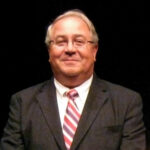
Arthur Gottschalk
A man whose music has been described as “infectious , loud, and fun” (Gramophone Magazine), and “fascinatingly strange” (BBC Music Magazine), award-winning composer Arthur Gottschalk is Professor of Music Composition at Rice University’s Shepherd School of Music. His music is regularly performed domestically and overseas, and his works are recorded and distributed on Navona Recordings, New Ariel, Crystal Records, Summit, Capstone, Beauport Classical, ERMMedia, AURecordings, Golden Crest, MSR Classics, Ablaze Records, Naxos, Amirani (Italy), and Delage (France). His works are published by Subito Music, Shawnee Press, European American Music Distributors, Alea Publishing, Trevco Music, The International Horn Society, Potenza Music, Delage Musique, and The Spectrum Press.

John A. Carollo
John A. Carollo studied piano as a child and was a member of a Catholic Church choir which sang for the congregation during weekend services. In 1986, he began composing for the piano and graduated from San Diego State University with a Masters Degree in Psychology. After moving to Honolulu HI in 1987, he started a career as a mental health counselor and social worker with the State of Hawaii, Department of Health. In 1997, he began private composition lessons with Dr. Robert Wehrman.
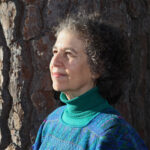
Meira Warshauer
Meira Maxine Warshauer’s music has been performed to critical acclaim throughout North America and Europe, as well as in South America, the Middle East, and Asia. Her musical palette is wide, ranging from traditional Jewish prayer modes to minimalist textures with rich melodic contours, and from joyful jazz-influenced rhythms to imaginative orchestrations of the natural world. At its core, it expresses her personal spiritual journey. As Ina Esther Joost, principal cellist with Jerusalem Symphony, observes, Meira’s music comes from a place which is beyond music. It is like a prayer from deep within the soul[and] it always evokes deep responses from the listeners.
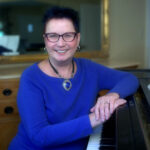
Mona Lyn Reese
Mona Lyn Reese concentrates on opera, orchestra, and choral music. Her work is melodic and accessible with an emphasis on driving or complex rhythms, movement, and contrasting textures. Her music communicates and expresses emotions traditionally or experimentally without allowing a prevailing fashion to dictate style, form, or harmony.

J. A. Kawarsky
Dr. J.A. Kawarsky (b. 1959) is Professor of Music Theory and Composition at Westminster Choir College of Rider University in Princeton in NJ. Dr. Kawarsky received his B.M. in composition from Iowa State University and his M.M. and D.M.A. from Northwestern University. At Northwestern he studied with John Paynter, Alan Stout, and Frederick Ockwell. In 1982, Dr. Kawarsky conducted the Opera Company of the Negev Region in Be’er Sheva in Israel. Before coming to Westminster in 1989, he taught at Fort Hays State University, the University of Wisconsin, and Moraine Valley Community College.
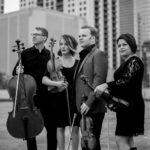
Apollo Chamber Players
Houston TX based Apollo Chamber Players “performs with rhythmic flair and virtuosity” (The Strad) and has “found fruitful territory” (Houston Chronicle) through innovative, globally-inspired programming and multicultural new music commissions. Winner of Chamber Music America’s prestigious Residency Partnership award, the quartet has performed for sold-out audiences at Carnegie Hall, and it holds the distinction of being the first American chamber ensemble to record and perform in Cuba since 1960. Apollo is featured frequently on American Public Media’s nationally-syndicated program Performance Today.
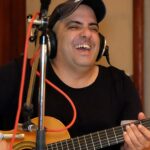
Dayron Ortega
Dayron Ortega graduated from the ENA in 1996 as a guitarist. His first professional musical group was "Son del Río" in Havana, of which he was the founder. A year later, he became part of the "Melao Son" project, with which he made his first International Tour in Canada. In 2000, he was called to be the founder of the project "Pancho Amat and his Cabildo del Son," in which he performed as an instrumentalist and vocalist (guitar), until the beginning of 2015. With this group he made international tours to different countries: Spain, Italy, Vienna, Holland, Germany, Belgium, Switzerland, Venezuela, Costa Rica, Dominican Republic, Mexico, Argentina, Brazil, Colombia, United States, Canada, Qatar, Japan, and Angola.
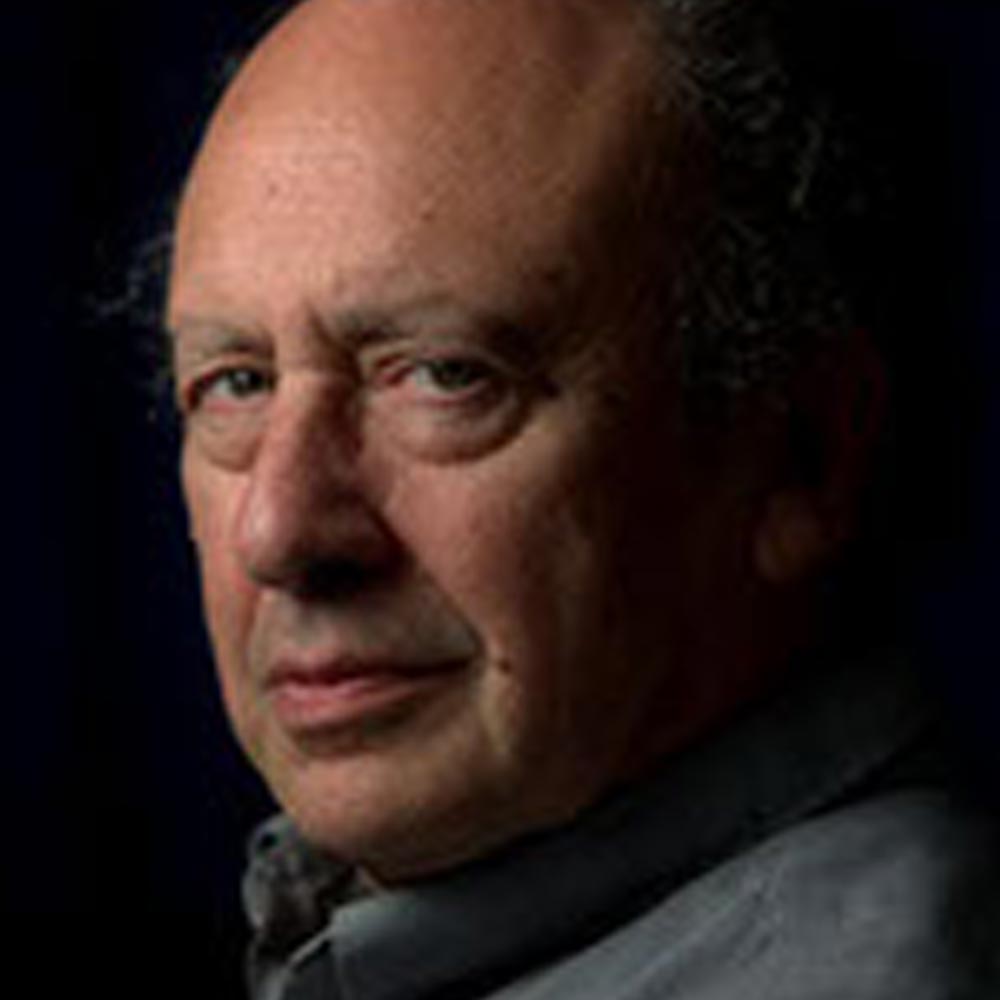
Daniel Helfgot
Opera director, journalist, author and translator, Daniel Helfgot also writes scripts and narrations for dance, cabaret, opera and other theatrical genres. His book The Third Line: the Opera Performer as Interpreter has become a definitive methodology for the opera singer. Helfgot has performed in stage productions including Piazzolla’s María de Buenos Aires and Franzetti’sTango Fatal, produced numerous radio programs and done camera direction for opera television broadcasts. Helfgot was a music critic in his native Argentina where he also founded and directed the by-monthly Ritmo, a magazine dedicated to the performing arts.
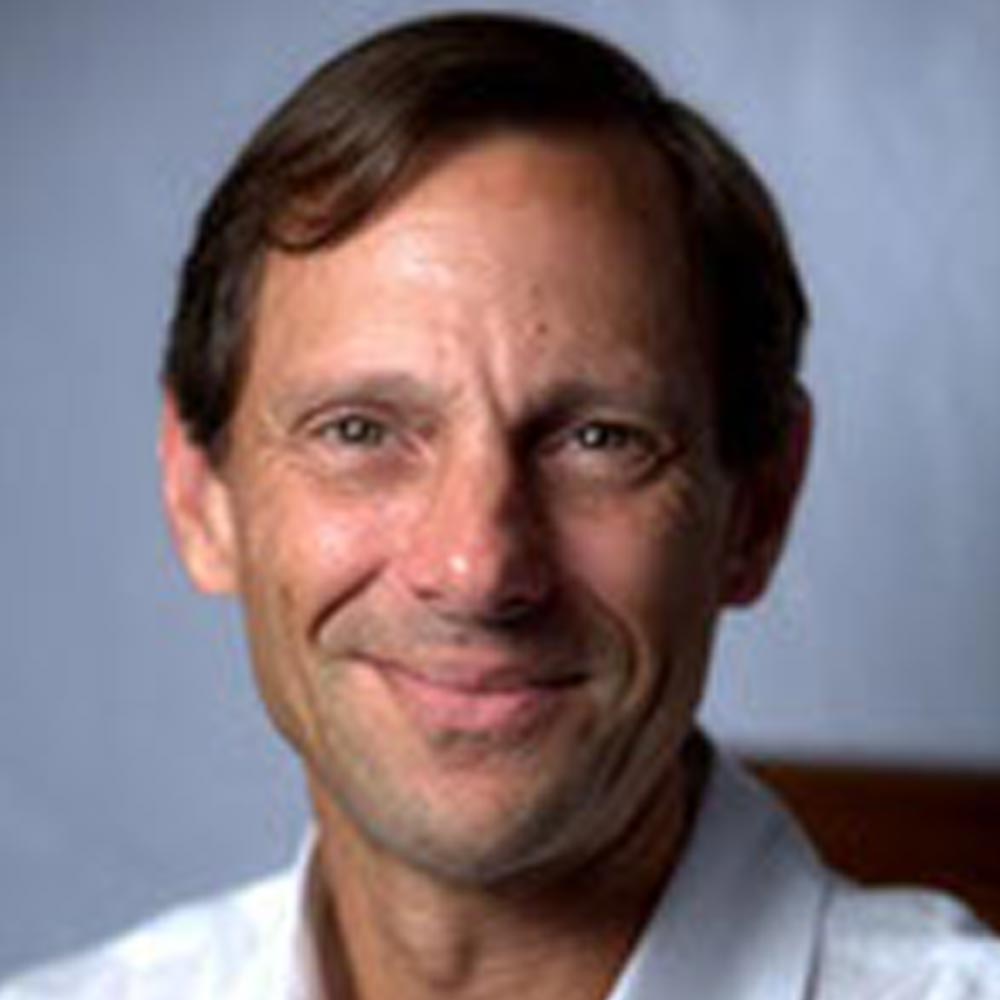
Thomas Hassing
Thomas Hassing studied creative writing with Michael Dennis Brown at the University of Minnesota, Minneapolis, and The Loft. He writes poetry, short stories, lyrics, and light verse. He is known for his engaging and comic writing.

